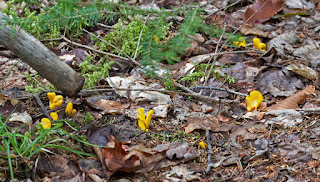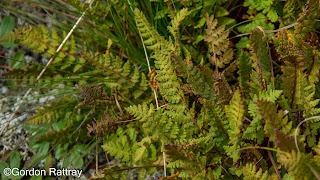NATURE
MONCTON NATURE INFORMATION LINE, Oct. 5, 2021 (Tuesday)
To respond by e-mail, please address your message to the information line editor, nelsonpoirier435@gmail.com .
Please
advise the editor at nelsonpoirier435@gmail.com
if any errors are noted in wording or photo labelling.
For more information on Nature Moncton, check the website at www.naturemoncton.com .
Edited by:
Nelson Poirier nelsonpoirier435@gmail.com
Info Line
# 506-384-6397 (384-NEWS)
**Frank branch reports his Clay-colored
Sparrow stayed in his Paquetville yard all day Monday. Eight birders came
for an audience and all saw it, being a lifer for 5 of them.
**Gordon Rattray shares some photos
of items seen on the visit to the Sussex Bluff. An American Hop-hornbeam
tree was showing its mature pod packets of seeds looking like the hop plant to
give it part of its common name. The hornbeam name comes from its use as a yoke
for oxen teams in the past.
There was a lot of Bearberry with
retained fruit at the site. This habitat is the one this plant favours making
in a plant we don’t see very often.
Common Speedwell had gone to seed in the very
distinct heart shape of the seeds in its cluster that is distinctive to the speedwell
group.
Douglas’ Knotweed had gone to seed which is a rare
plant in New Brunswick rated at S1.
Lots of
plump Goldenrod Galls housing the midge larva that come from the egg
deposited by the adult midge fly with an enzyme that causes the plant tissue to
surround it with the protective gall and the hatched larva will feed on juices
from the plant causing negligible harm to the plant.
The rare
plant, Spike Moss was found. It is not actually a moss but a fern ally.
The fern Rusty
Woodsia was present. It prefers to grow on rock ledges.
The small
white seed packets of the plant European Gromwell (with other common
names) were very noticeable. This plant is more common in the Sussex area than
other parts of New Brunswick.
Three-
toothed Cinquefoil
was common showing the three teeth on the leaves to give it its name.
**Brian
Stone adds more items from the Sussex Bluff visit that coordinate well with
Gordon Rattray’s photos.
Some of the
other items Brian photographed that are not in combo already with Gordon’s are below:
A huge field
of pumpkins was ready for harvest that was so far distant from the Bluff down
into the valley, they looked like orange ping-pong balls.
The
colourful yellow mushroom Irregular Earth Tongue was sprouting up in
many places, as well as Honey Mushrooms, Canary Trich Mushrooms, Destroying
Angel (more than usually encountered), and Scarlet Waxycap. That is
naming only a few of the mushroom species encountered.
The large bite out of one of the Destroying Angel photos show that some foragers in Mother Nature's community are able to detoxify the amatoxin.
Brian also
photographed the Jerusalem Artichoke plant both at home and in Sussex to
see the bumblebees working the centre disc florets (the true business part of the
plants reproductive apparatus) and the bright yellow ray florets on the side to
attract pollinators.
**Aldo Dorio photographed a first
fall Common Tern at Hay Island. They are now the size of their parents
and Aldo’s photo shows the expected plumage at this time of year for a juvenile
bird and there’s lots of them around our coastline. Gilles Belliveau comments
the bill coloration looks typical of young birds of this species but adult birds can likely
have similar bill coloration in nonbreeding plumage.
**Gabriel and Tanya Gallant came
across yet another interesting mushroom, the Netted Stinkhorn. Before
this mushroom bursts out of its skin, it looks like a soft shelled egg on the
ground surface or near it. Gabriel got a photo of what it looks like cutting in
cross-section before it breaks out of its outer skin. I have never tried it,
but at this stage is considered a choice edible, especially in some cultures.
It was reported this was served to Richard Nixon on the famous trip he made to
China some years ago as a special delicacy. No report on whether he actually ate
it or not but would be suspicious he did to be polite.
Once this mushroom brakes through its
skin to grow upward, it produces a slimy top and draping net veil around it. The “egg” can be gathered and surrounded by wet paper towel and it will burst forth into an actually
beautiful creature. It has to be done under tight glass as the fetid smell it
produces to attract flies to carry away its spores is an incredibly strong to earn it its name.
Nelson
Poirier
Nature
Moncton









































